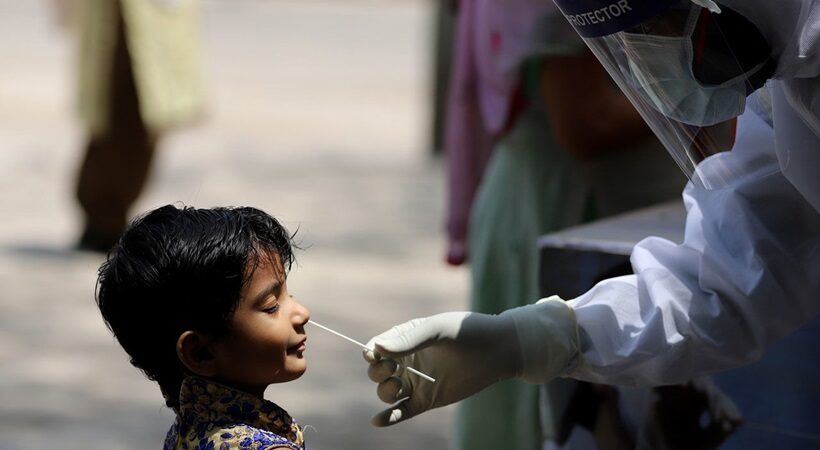A modelling study published recently revealed that Covid-19 may behave like other common-cold coronaviruses in the next few years and primarily affect young children who have not been vaccinated or exposed to the virus.
According to the US-Norwegian team, the severity of Covid-19 is usually lower in children. The overall burden from this disease is expected to decline with the SARS-CoV-2 virus becoming endemic in the global population.
“Following infection by SARS-CoV-2, there has been a clear signature of increasingly severe outcomes and fatality with age,” Ottar Bjornstad from the University of Oslo in Norway, was quoted as saying.
“Yet, our modelling results suggest that the risk of infection will likely shift to younger children as the adult community becomes immune either through vaccination or exposure to the virus,” he added.
The study was published in the journal Science Advances. It found that with other coronaviruses and influenza viruses emerging and ultimately becoming endemic, such shifts have often been observed.
“Historical records of respiratory diseases indicate that age-incidence patterns during virgin epidemics can be very different from endemic circulation,” Bjornstad said.
“For example, ongoing genomic work suggests that the 1889-1890 pandemic, sometimes known as the Asiatic or Russian flu — which killed one million people, primarily adults over age 70 — may have been caused by the emergence of HCoV-OC43 virus, which is now an endemic, mild, repeat-infecting cold virus affecting mostly children ages 7-12 months old,” he said.
If the immunity to reinfection by SARS-CoV-2 wanes among adults, however, the burden of the disease is likely to remain high in that group. Previous exposure to the virus would, however, lessen the disease’s severity.
“Empirical evidence from seasonal coronaviruses indicates that prior exposure may only confer short-term immunity to reinfection, allowing recurrent outbreaks; this prior exposure may prime the immune system to provide some protection against severe disease,” said Bjornstad.
“However, research on COVID-19 shows that vaccination provides stronger protection than exposure to the SARS-CoV-2 virus, so we encourage everyone to get vaccinated as soon as possible,” he added.
To examine potential future scenarios for age incidence and look into the burden of mortality for COVID-19, a “realistic age-structured (RAS) mathematical model” was developed — one that integrates demography, degree of social mixing, and duration of infection-blocking and disease-reducing immunity.
The analysis revealed that disease burden over immediate, medium and long terms is one, 10 and 20 years.
Disease burdens for 11 countries with significant differences in their demographics were also examined — China, Japan, South Korea, Spain, UK, France, Germany, Italy, the US, Brazil and South Africa. For all of these countries, data from the United Nations was used to parameterize the model.
Various scenarios for immunity were incorporated in the model, including independence and dependence of disease severity on being exposed previously and short-and long-term immunity.
“For many infectious respiratory diseases, prevalence in the population surges during a virgin epidemic but then recedes in a diminishing wave pattern as the spread of the infection unfolds over time toward an endemic equilibrium,” said Ruiyun Li, a postdoctoral fellow at the University of Oslo.
“Depending on immunity and demography, our RAS model supports this observed trajectory. It predicts a strikingly different age structure at the start of the COVID-19 epidemic compared to the eventual endemic situation,” he added.
The researchers found that when it comes to long-lasting immunity, the young are expected to have the highest infection rates. The older, on the other hand, prior infection protects the older from new infections.
According to associate professor at Princeton University, US, Jessica Metcalf, the prediction will possibly hold only if reinfections produce mild disease.



















